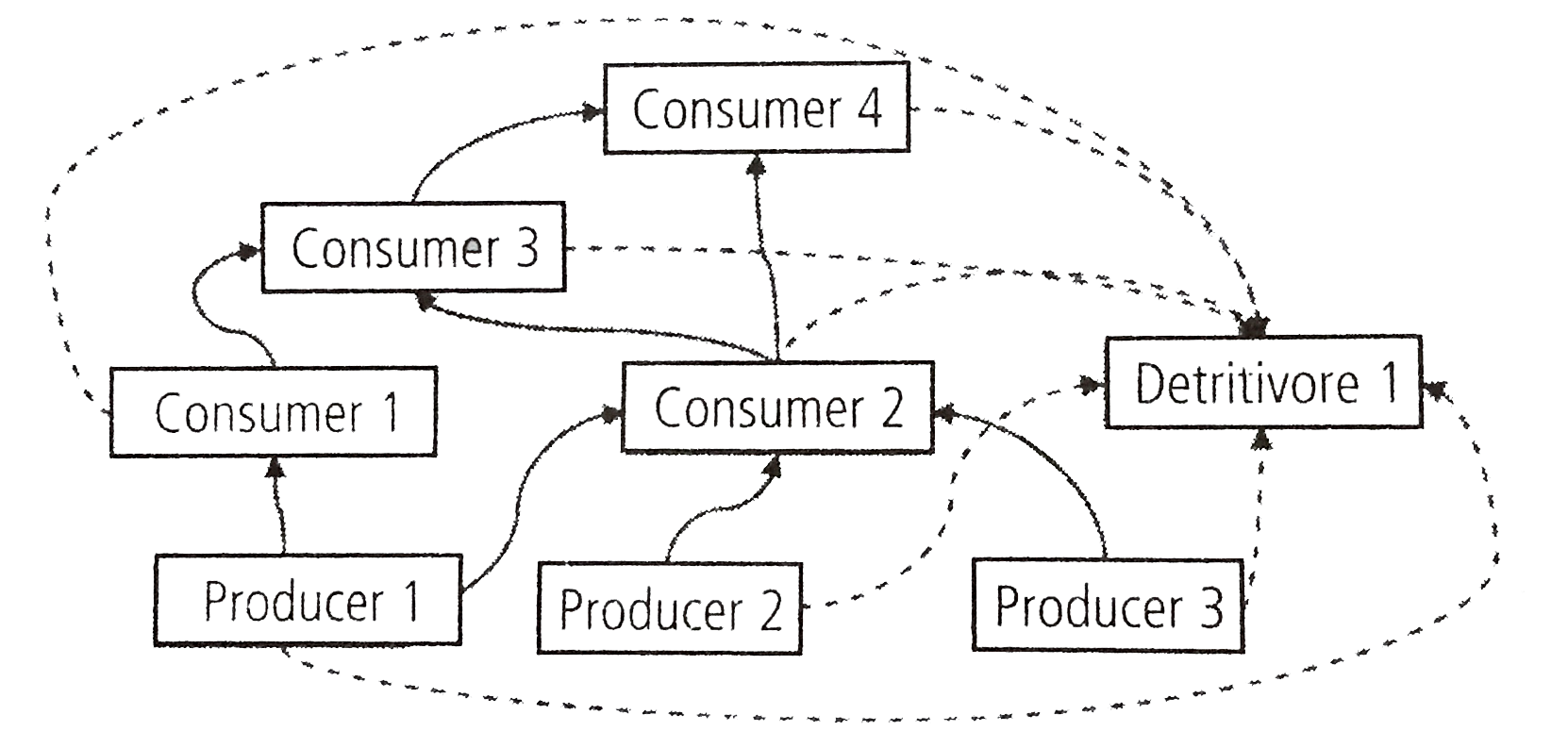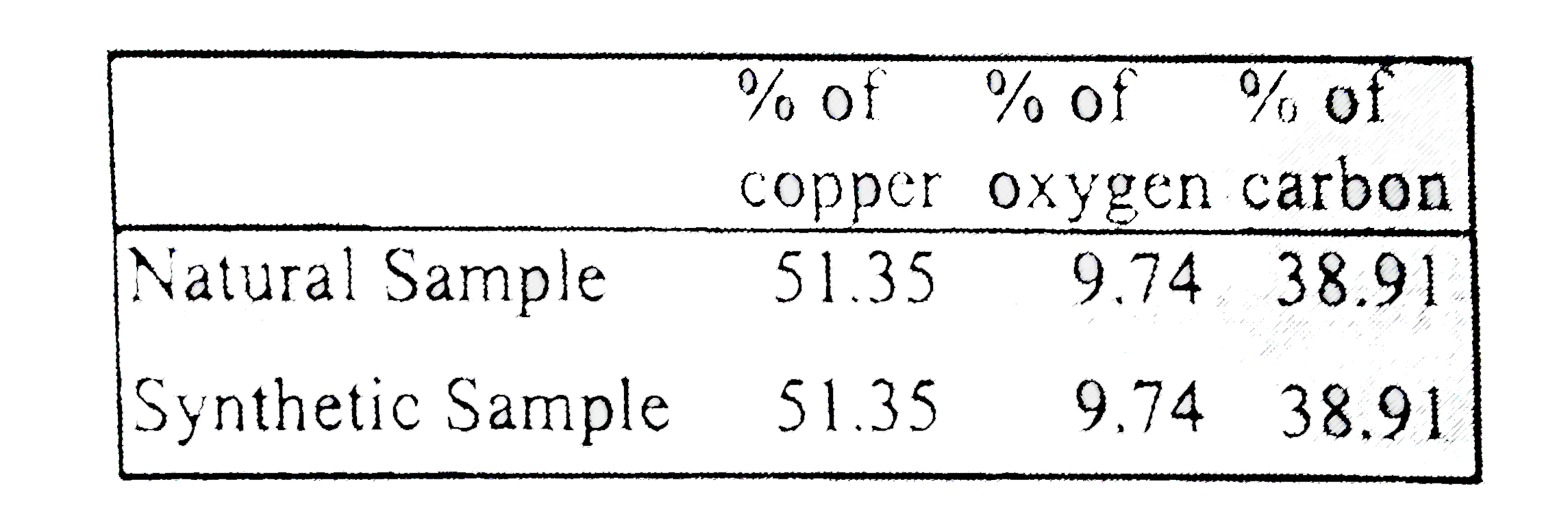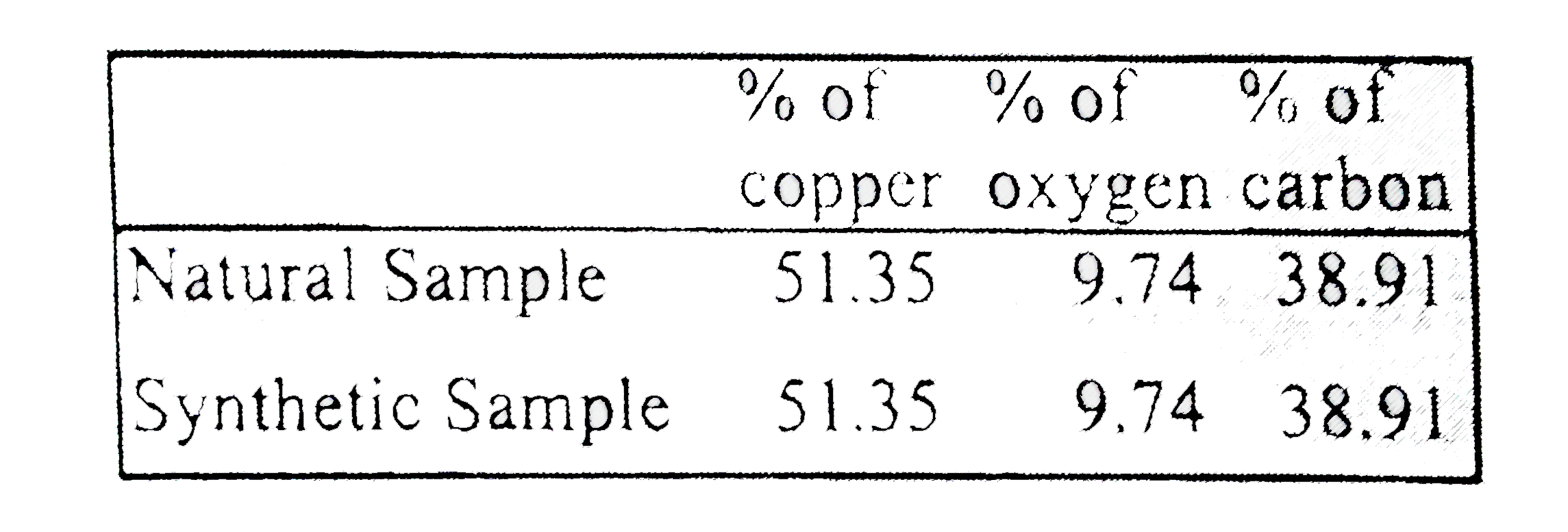It is said that elemental composition of living organisms and that of inanimate objects (like earth's crust ) are similar in the sense that all the major elements are present in both. Then what would be the difference between these two groups ?
Choose a correct answer from the following.
In absolute terms, no such differences could be made out. All the elements present in a sample of earth.s crust are also present in a sample of living tissue. However, a closer examination reveals that the relative abundance of carbon and hydrogen with respect to other elements is higher in any living organism than in earth.s crust.
Topper's Solved these Questions
- BIOMOLECULESBOOK - ICSECHAPTER - BIOMOLECULESEXERCISE - NCERT EXERCISES WITH ANSWERS
12 Videos
- BIOMOLECULESBOOK - ICSECHAPTER - BIOMOLECULESEXERCISE - NCERT EXERCISES WITH ANSWERS (DIFFERENTIATE BETWEEN)
25 Videos
- BIOMOLECULESBOOK - ICSECHAPTER - BIOMOLECULESEXERCISE - TEST YOUR PROGRESS (SHORT/LONG ANSWER TYPE QUESTIONS)
1 Videos
- BIOLOGY ISC SAMPLE QUESTION PAPER 2019BOOK - ICSECHAPTER - BIOLOGY ISC SAMPLE QUESTION PAPER 2019EXERCISE - PART-II (SECTION -C)
6 Videos
- BODY FLUIDS AND CIRCULATIONBOOK - ICSECHAPTER - BODY FLUIDS AND CIRCULATIONEXERCISE - DIFFRENTIATE BETWEEN
13 Videos
Similar Questions
Fill in the blanks with the correct word from the brackets:
The bond between two elements in group 17[VIIA] of the periodic table is likely to be ______ [ionic / covalent]
View SolutionThe main group elements i.e. representative elements complete their electron configuration using s and p electrons in the periodic table. These elements range from the most metallic to the most non-metallic with intermediate properties, the semi-metals, in between .The elements which occur at the two extremes of the periodic table are highly reactive and therefore, these highly reactive elements do not occur in free state : they usually occur in the combined forms.
Beryllium and aluminium exhibit many properties which are similar, but, the two elements differ in :
View Solution
Knowledge Check
The given diagram represents the relationships between organisms in a remote pond ecosystem. From this information. Which of the following is the most likely to be correct?

1) DDT present in the ecosystem would accumulate to the highest concentrations in the tissues of detritivore 1.
2) The introduction of consumer 4 individuals from an external population would lead a temporary increase in number of producer 2.
3) Disease in the producer 1 population would lead to an increase in the producer 3 population.
4) Extermination of consumer 3 would cause a sustained increase in the population of consumer 2.ADDT present in the ecosystem would accumulate to the highest concentrations in the tissues of destritivore 1.BThe introduction of consumer 4 individuals from an external population would lead a temporary increasein number of producer 2.CDisease in the producer 1population would lead to an increase in the producer 3 propulation.DExterination of cunsumer 3 would cause a sustained increase in the population of consumer 2.The most important problem posed by the existence of different interests, that is to say different mental models and paradigms about and within organizations, is how to tackle their (potential) incompatibility. In order to manage the cognitive and normative differences and preferences as part of organizational practice, knowledge management and thus management education will have to detach themselves from a functionalist management ideology, and the positivistic idea of knowledge and rationality which is associated with it. Such concepts as deutero leaning, n-th order changes, and innovation instead of improvements) do not fit into the latter approach. Functionalism has a marked preference for unity above diversity, for harmony above conflict, for (functional) integration, and it chooses order above the potential chaos of continuous change. Incompatibility or incommensurability are then seen as a grave threat to vested interests. Functionalists in particular react too emotionally and with disgust at the idea of (apparent) unreconcilable differences which adhere to incommensurability. If, however, knowledge management and therefore also management education wish to be able to pride themselves on the fact that they aspire to continuous innovation and learning in organizations, then the management of irreconcilability and pluriformity will be an unavoidable and indispensable prerequisite for its success. Postmodernism belies all grand narratives like those of positivism and even Habermas's theory of rationality, that try to force people into the mold of a specific way of thinking and acting.
Postmodernism explains this tendency of grand theoretical system by positing two central characteristic of human reason : first, there is the fundamental and inalienable freedom or reason to conceptualize 'the world' in different ways, while second, each of these conceptualizations has a built-in and irreducible claim to universality. Management of incommensurability and heterogeneity in organizations expressly demands a postmodern epistemological perspective. Such concepts as incommensurability and internal differences have a prominent place in postmodernism. As is evident from the above quotation, postmodernism believes all great narratives on the levels of both epistemology and social philosophy. Positivism and even Habermas's theory of rationality, which under the guise of universality attempted to force people into a certain way of thinking and acting, as history has so adequately demonstrated, do not shrink from a totalitarian approach, Postmodernism shows that the incompatibility of grand theoretical systems is to be traced to two central features of human reason: first, the fundamental freedom of thought with which to view the world in one's own and therefore different way, and second, the inbuilt claim to universality, i.e., that one considers one's own point of view to be the best. It is for this reason that in practice it is not enough to minimalize the differences between alternative perspectives (which could lead to a kind of pluralistic indifference), neither would it do to resolve the conflicts between them in a forcible manner (this would lead only to dogmatism).
Managing differences will therefore be a challenge for knowledge management to find which leading element would be helpful in steering the ship of organization past the rocks of totalitarian rule and then around the cliffs of indifference.
For each word given below choose the correct meaning (as used in the passage) from the options provided:
irreconcilabilityAdissimilarityBfriendlyCappeasableDincompatibleThe most important problem posed by the existence of different interests, that is to say different mental models and paradigms about and within organizations, is how to tackle their (potential) incompatibility. In order to manage the cognitive and normative differences and preferences as part of organizational practice, knowledge management and thus management education will have to detach themselves from a functionalist management ideology, and the positivistic idea of knowledge and rationality which is associated with it. Such concepts as deutero leaning, n-th order changes, and innovation instead of improvements) do not fit into the latter approach. Functionalism has a marked preference for unity above diversity, for harmony above conflict, for (functional) integration, and it chooses order above the potential chaos of continuous change. Incompatibility or incommensurability are then seen as a grave threat to vested interests. Functionalists in particular react too emotionally and with disgust at the idea of (apparent) unreconcilable differences which adhere to incommensurability. If, however, knowledge management and therefore also management education wish to be able to pride themselves on the fact that they aspire to continuous innovation and learning in organizations, then the management of irreconcilability and pluriformity will be an unavoidable and indispensable prerequisite for its success. Postmodernism belies all grand narratives like those of positivism and even Habermas's theory of rationality, that try to force people into the mold of a specific way of thinking and acting.
Postmodernism explains this tendency of grand theoretical system by positing two central characteristic of human reason : first, there is the fundamental and inalienable freedom or reason to conceptualize 'the world' in different ways, while second, each of these conceptualizations has a built-in and irreducible claim to universality. Management of incommensurability and heterogeneity in organizations expressly demands a postmodern epistemological perspective. Such concepts as incommensurability and internal differences have a prominent place in postmodernism. As is evident from the above quotation, postmodernism believes all great narratives on the levels of both epistemology and social philosophy. Positivism and even Habermas's theory of rationality, which under the guise of universality attempted to force people into a certain way of thinking and acting, as history has so adequately demonstrated, do not shrink from a totalitarian approach, Postmodernism shows that the incompatibility of grand theoretical systems is to be traced to two central features of human reason: first, the fundamental freedom of thought with which to view the world in one's own and therefore different way, and second, the inbuilt claim to universality, i.e., that one considers one's own point of view to be the best. It is for this reason that in practice it is not enough to minimalize the differences between alternative perspectives (which could lead to a kind of pluralistic indifference), neither would it do to resolve the conflicts between them in a forcible manner (this would lead only to dogmatism).
Managing differences will therefore be a challenge for knowledge management to find which leading element would be helpful in steering the ship of organization past the rocks of totalitarian rule and then around the cliffs of indifference.
For each word given below choose the correct meaning (as used in the passage) from the options provided:
inalienableAimpermanentBchangeableCunchallengeableDirreligious
This law was given by, a French chemist , Joseph Proust. He stated that a given compound always contains exactly the same proportion of elements by weight.
Proust worked with two samples of curpic carbonate- one of which was of natural origin and the other was synthetic one . He found that the composition of elements present in it was for both the samples as shown below:
Thus, irrespective of the source, a given compound always contains same elements in the same proportion. The validity of this law has been confrmed by various experiments. It is sometimes also reffered to as Law of constant composition.
Limitation:
This law is not applicable if the compound is formed from different isotopes of an element . The two isotopes of carbon C-12 and C-14 form carbondioxide C12O2 and C14O2 . The ratio of C : O is 12 : 32 and 14 : 32 respectively .It is not a constant ratio.
0.5 G silver is dissolved in excess of nitric acid. This solution is treated with excess of NaCl solution when 0.66 g AgCl is formed. One gram metallic silver wire is heated in dry Cl2 ,1.32 g AgCl is formed . Show that these data confirm the law of constant proportion.

View SolutionThis law was given by, a French chemist , Joseph Proust. He stated that a given compound always contains exactly the same proportion of elements by weight.
Proust worked with two samples of curpic carbonate- one of which was of natural origin and the other was synthetic one . He found that the composition of elements present in it was for both the samples as shown below:
Thus, irrespective of the source, a given compound always contains same elements in the same proportion. The validity of this law has been confrmed by various experiments. It is sometimes also reffered to as Law of constant composition.
Limitation:
This law is not applicable if the compound is formed from different isotopes of an element . The two isotopes of carbon C-12 and C-14 form carbondioxide C12O2 and C14O2 . The ratio of C : O is 12 : 32 and 14 : 32 respectively .It is not a constant ratio.
6.488 g lead with 1.002 g oxygen to form an oxide. This oxide is also obtained by heating Pb(NO3)2, It is found that % of lead in this oxide is 86.62 .Show that these date illustrate the law of definite proportions.

View SolutionIt is not possible to measure the atomic radius precisely since the electron cloud surrounding the atom does not have a sharp boundary. One practical approach to estimate the size of an atom of a non-metallic element is to measure the distance between two atoms when they are bound together by a single bond in a covalent molecule and then dividing by two. For metals we define the term "metallic radius" which is taken as half the inter nuclear distance separating the metal cores in the metallic crystal. Then van der waal's radius represents the over all size of the atoms which includes its valence shell in a non bonded situation. It is the half of the distance between two similar atoms in separate molecules in a solid. The atomic radius decreases across a period and increases down the group. Same trends are observed in case of ionic radius. Ionic radius of the species having same number of electrons depends on the number of protons in their nuclei. Sometimes, atomic and ionic radii give unexpected trends due to poor shielding of nuclear charge by d-and f−orbital electrons.
Now answer the following three questions:
Which of the following relations is correct, if considered for the same element.
View SolutionThe electron in a Li++ ion is the nth shell , n being very large. One of the K-electron in another matallic atom has been knocked out. The second matel has four orbits. Now, we take two sample one of Li++ ion and the other of the second mateillic ions. Suppose the probability of electronic transition from higher to lower energy level is directly proportional to the energy difference between the two shells. Take hc=1224eVnm , where h is Planck's constant and c the velocity of light in vacuum. It is found that major electromagnetic wavws emitted from the two sample are identical. Now , answer the following questions:
What is the major X-ray emitted by the sample?
View SolutionThe most important problem posed by the existence of different interests, that is to say different mental models and paradigms about and within organizations, is how to tackle their (potential) incompatibility. In order to manage the cognitive and normative differences and preferences as part of organizational practice, knowledge management and thus management education will have to detach themselves from a functionalist management ideology, and the positivistic idea of knowledge and rationality which is associated with it. Such concepts as deutero leaning, n-th order changes, and innovation instead of improvements) do not fit into the latter approach. Functionalism has a marked preference for unity above diversity, for harmony above conflict, for (functional) integration, and it chooses order above the potential chaos of continuous change. Incompatibility or incommensurability are then seen as a grave threat to vested interests. Functionalists in particular react too emotionally and with disgust at the idea of (apparent) unreconcilable differences which adhere to incommensurability. If, however, knowledge management and therefore also management education wish to be able to pride themselves on the fact that they aspire to continuous innovation and learning in organizations, then the management of irreconcilability and pluriformity will be an unavoidable and indispensable prerequisite for its success. Postmodernism belies all grand narratives like those of positivism and even Habermas's theory of rationality, that try to force people into the mold of a specific way of thinking and acting.
Postmodernism explains this tendency of grand theoretical system by positing two central characteristic of human reason : first, there is the fundamental and inalienable freedom or reason to conceptualize 'the world' in different ways, while second, each of these conceptualizations has a built-in and irreducible claim to universality. Management of incommensurability and heterogeneity in organizations expressly demands a postmodern epistemological perspective. Such concepts as incommensurability and internal differences have a prominent place in postmodernism. As is evident from the above quotation, postmodernism believes all great narratives on the levels of both epistemology and social philosophy. Positivism and even Habermas's theory of rationality, which under the guise of universality attempted to force people into a certain way of thinking and acting, as history has so adequately demonstrated, do not shrink from a totalitarian approach, Postmodernism shows that the incompatibility of grand theoretical systems is to be traced to two central features of human reason: first, the fundamental freedom of thought with which to view the world in one's own and therefore different way, and second, the inbuilt claim to universality, i.e., that one considers one's own point of view to be the best. It is for this reason that in practice it is not enough to minimalize the differences between alternative perspectives (which could lead to a kind of pluralistic indifference), neither would it do to resolve the conflicts between them in a forcible manner (this would lead only to dogmatism).
Managing differences will therefore be a challenge for knowledge management to find which leading element would be helpful in steering the ship of organization past the rocks of totalitarian rule and then around the cliffs of indifference.
Which of the following best denotes the characteristic features of functionalism, as brought out in the passage ?
View Solution
